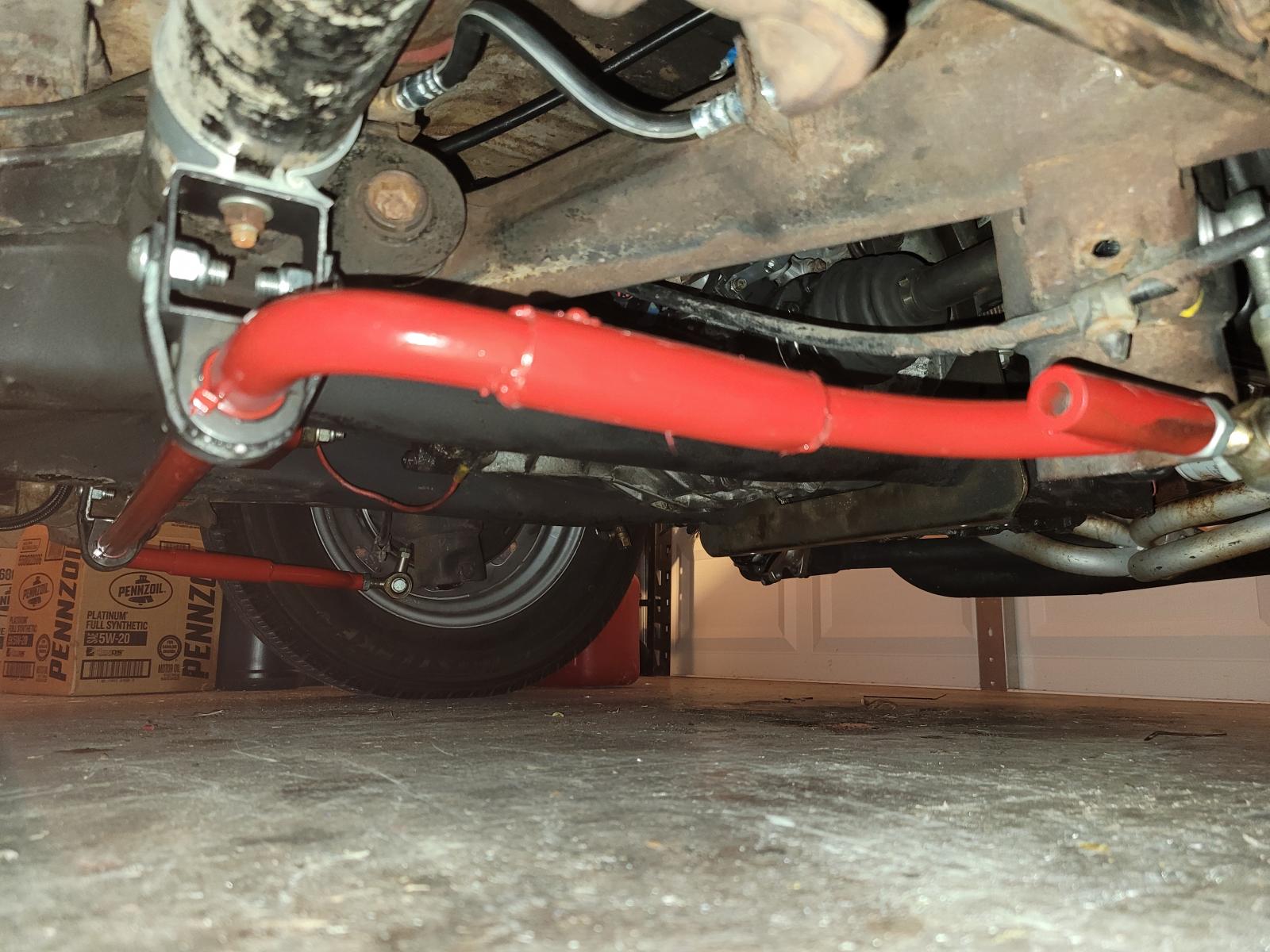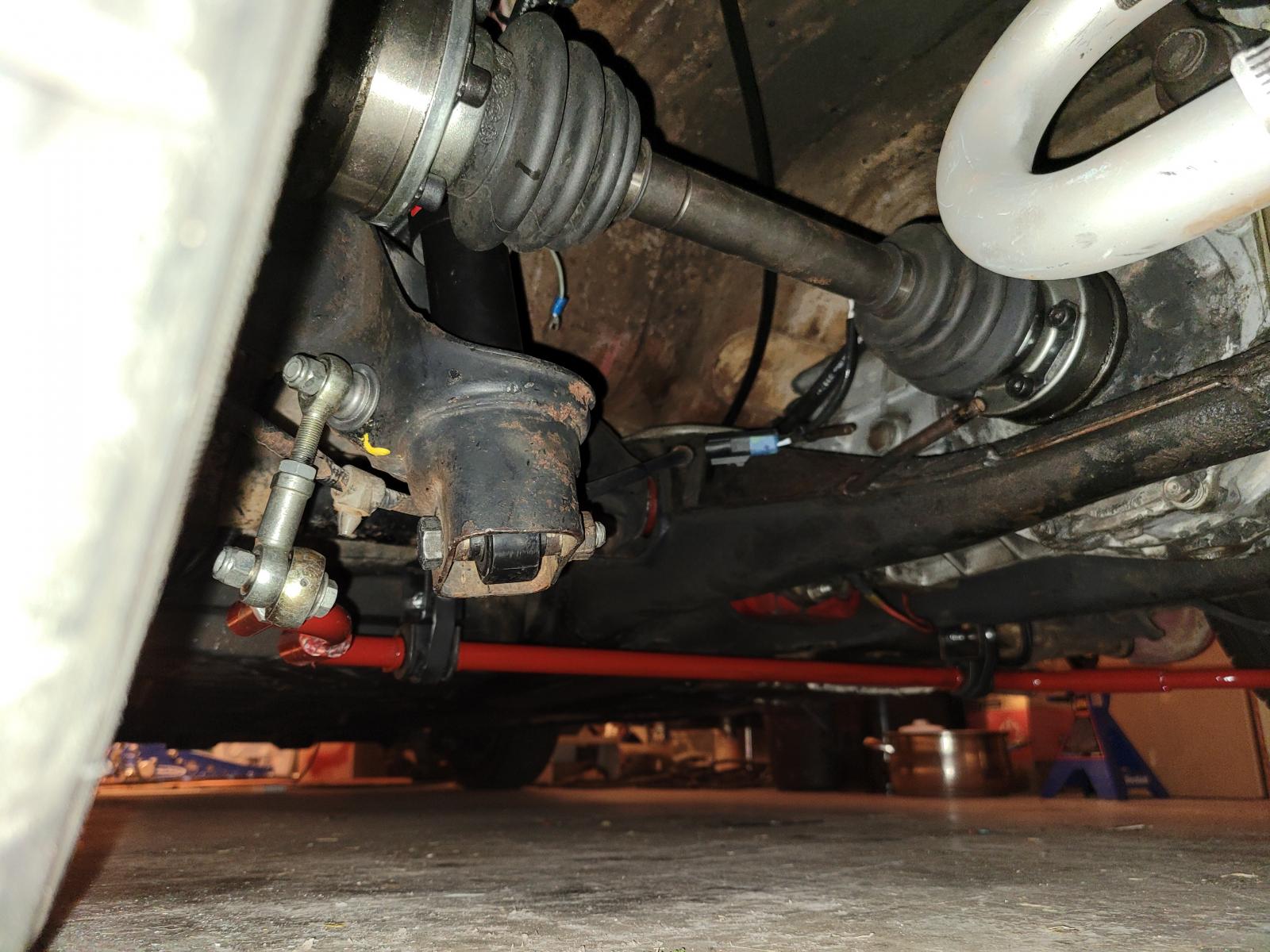
On our historic vintage racing 1970 Ghia we run 19mm front and 16mm rear "antiroll" sway bars. The 16mm bars used to be available available in the distant past. I have an old one. The Porsche solution to the Porsche 911 handling problems was heavy front bar, light rear bar. That said, the 911S came with 15mm front and rear anti-roll bars. As the cars go heavier, the bars got bigger. The 1976-77 Turbos got a factory front 18mm bar.
I'd love to have adjustable bars on our racer, but can't find any, so we compensate with tire pressures on our Hoosier Speedster (bias ply) racing tires.
The Type 1 356 and VW beam axle front suspension has almost no antidive, so to compensate, you should run bigger rear brakes than front, or at least equal. We run the widely-copied ATE-style cast iron calipers (40mm left and right pistons) and on standard rotors they work for us. Racy cross drilling is optional.
In a hard corner, the front beam axle rolls with the car body itself (making them lean) and induces understeer as the front tires lose contact. This comes to us straight from the 1930's Auto Union Porsche-designed P-Wagens. Want to see a P-Wagen front axle beam? Look at a VW axle beam.
Even with the great improvement of the 4-joint rear suspension, the rear tires again are subject to tilting with the body. The only defense against this on our Type 1 chassis is stiff front and rear antiroll bars to try and keep the car flat. The fly in the buttermilk is stiff front bars invite tire lift right off the pavement. Even stock Ghia's will lift a front tire with the factory sway bar. That's because the spring rates of the stock front torsion bars exceed the spring rates of the softer rear torsion bars.
We've proven the classic Type 1 VW suspension with fairly little modification can get out there and run with the "real" sports cars. We're number 13 in this qualifying session at Road Atlanta.




